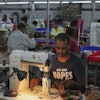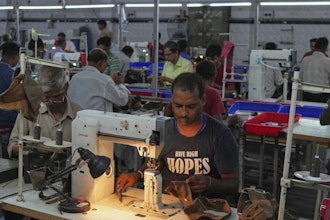This article orignially appeared in the January/February 2014 print edition of IMPO.
IMPO, in collaboration with the law firm Kaye Scholer, recently completed a survey of IMPO subscribers on their electric energy use and concerns within the context of “demand response” programs. Demand response programs pay participants to be available to reduce their energy consumption for short periods of time when requested by the grid operator. A summary of the survey results follows below and includes some key takeaways for manufacturers to review when considering demand response programs.
Nearly 200 companies participated in our survey, and 53 percent ranked energy needs as “very important,” with an additional 15 percent ranking it as the “most important” priority for their company. Only five percent of survey participants responded that managing energy costs were “not important” or “less important” for their company. Of all survey participants, 30 percent have participated in a demand response program — 58 companies currently participate in a program and eight manufacturers tried demand response, but no longer take part.
Most Seek to Cut Costs
Not surprisingly, the survey found that, whether currently participating in a demand response program or not, almost all manufacturers are taking steps to lower their energy costs. Seventy percent of survey participants indicated that they have invested in energy efficient lighting and equipment. Additionally, some use timers to shut off equipment when the facility is closed and others are using timed air conditioning controls. Thirty percent will shut down or shift production to avoid high energy costs. Eight percent of survey respondents use onsite generation during peak hours when costs are typically highest.
Forty-three Percent of Manufacturers Unfamiliar With Options
For some manufacturers – and for the nearly one-half of our survey respondents who are not currently participating in a program, but are familiar with demand response – such programs may simply be unavailable. Demand response programs are subject to regulation by the Federal Energy Regulatory Commission (FERC) or by state utility commissions. State-administered programs have been slow to develop in some regions where lower energy costs have not created economic pressures to conserve energy. And while federally-driven programs administered by grid operators in regionally organized markets are typically well designed, such programs are not available outside of those specific markets.
Another reason for not participating, however, might be a manufacturer’s lack of familiarity with demand response programs and their available options. When asked why their company did not participate in a demand response program, 65 percent responded that they were not familiar with these programs. Overall, 43 percent of manufacturers who responded to the survey were unfamiliar with the potential benefits of demand response programs.
Because energy costs are “most important” or “very important” for most of these participants, these manufacturers may be interested to learn more about demand response programs available to them. Moreover, given the significance of energy costs for most manufacturers, utilities, third-party providers, and regulators have strong incentives to redouble their efforts to broaden program availability and to educate a broad range of potential participants. The survey data reveals that almost all participants who say they are not familiar with demand response programs are actively reducing energy costs by shifting production, or have made investments in on-site generation or energy efficient lighting and equipment. Combining those cost savings efforts with participation in a demand response program could compound potential savings.
Just 12 percent of survey participants cited a concern about compliance with regulatory rules as a reason for not participating in a demand response program. Compliance can create challenges and risks for an industrial manufacturer and may be complicated by uncertainty or confusion about the identity of the regulator, a lack of uniform rules and regulations, and widely varying procedures from region to region that may change unexpectedly.
The small number of survey participants who had previously tried a demand response program but terminated it did so for a variety of reasons, including inadequate return on investment; energy consumption being too low to make a difference; and challenges managing production demands, losses, and consequential delays. Not unexpectedly, a small group of manufacturers opted out because demand response was a poor fit with their business model, demonstrating that demand response programs suit some business models better than others.
Why Manufacturers Do Participate
Of the roughly 30 percent of survey respondents who participate in a demand response program, the top reasons for participation were driven by bottom-line objectives: to save money, be more efficient, and remain competitive. Only a few manufacturers cited social responsibility as the primary driver. Companies might want to consider the benefits, however, of promoting their participation in a demand response program through the lens of community goodwill. Not only do these programs help to relieve strain on the electric grid and avoid blackouts that would affect critical infrastructure, but they may also help manufacturers become eligible for ISO (International Organization for Standardization) 14001 and 50001 certifications, which identify a company with manufacturing processes and operating procedures focused on energy management and environmental responsibility. And myriad studies – including one conducted by Deloitte and the Grocery Manufacturers Association – show that sustainability considerations increasingly drive or influence US consumers’ buying decisions.
Cost Savings
The cost savings that demand response programs provide typically vary based on a number of factors, including the specific program type, the level and pattern of electric consumption, and electricity prices, but some participants have realized considerable overall savings on their energy costs. About half of our survey participants reported that demand response programs reduced their energy costs between one and five percent; one-fifth saved between six and 10 percent; and a small share reported they saved between 11 and 15 percent. The remainder reported that they have effectively not realized any cost savings.
Third-Party Service Providers and Compliance Concerns
Only one-third of survey participants who currently participate in a demand response program reported that they were aware that those programs are regulated at the state or federal level. This could be problematic because if manufacturers don’t recognize the program is regulated they may be out of compliance without even knowing it.
Many survey participants were not sure how their company had enrolled in their demand response program, which is typically through a third-party provider or their local electric utility.
Furthermore, the survey results indicate that communications between the manufacturer and the demand response provider could be improved. Few survey participants seem to have regular communications with their service provider. While demand response service providers may be doing a good job, a significant 29 percent of our survey participants who responded to this question reported that they believe their service provider “never” communicates with them about compliance. Less than half reported communications once or twice a year. Only seven participants reported that their service provider communicates in writing on a regular basis. This raises questions about the amount and quality of information that companies receive about demand response programs, which can impact their ability to comply with federal and state regulations.
Manufacturers Should Review Protocols
While it’s clear from the responses that demand response service providers may not be initiating adequate communications with their customers, it’s really a two-way street. Manufacturers should not hesitate to ask for more information about the program in which they participate. Likewise, the burden lies with manufacturers to ensure that their procedures comply with regulatory requirements and, in this regard, incorporating written protocols into a compliance program is a step in the right direction. The vast majority of survey participants who reported that they do not have written protocols for their demand response program also reported that they never discuss compliance issues with their provider or did not answer the question about communications with their third-party service provider.
When asked why participants did not have written protocols to assist with compliance, the answers suggest that they may believe that compliance is not an issue because demand response programs are voluntary — participants choose whether to enroll and if they are not able to make committed energy reductions whenever requested, they are assessed financial penalties for failing to respond. Although this is true, enrollment in a demand response program subjects the participant to oversight by the electric market regulator, and every participant must comply with program rules or risk an investigation of their practices. Compliance issues may arise, for example, if a participant deliberately overstates the amount of energy it is capable of curtailing or takes steps that artificially increase its consumption baseline.
Among those survey participants who do utilize written protocols, those procedures generally do not focus on compliance with the demand response program. A number of respondents have protocols to ensure that curtailments are properly executed by, for example, bringing all equipment down and back up in an orderly manner to avoid damage to the equipment and to ensure no loss of production capacity. These are good reasons for having written procedures, but manufacturers may want to consider elaborating on them to cover regulatory compliance as well.
Key Takeaways
Even if you already deploy technologies to reduce energy consumption, you may be able to realize additional savings by enrolling in a demand response program. To learn more about the demand response options available to you, consider starting your research with established providers endorsed by local Chambers of Commerce or industry associations.
While participating in a demand response program is voluntary, you must nonetheless comply with state and/or federal rules or potentially risk incurring substantial penalties.
To maximize your relationship with your demand response program provider, request that it provide you with the most current information regarding demand response programs and issues in your region on a regular basis, including compliance rules.
To stay abreast of current compliance requirements that affect you or if you have unanswered concerns about your participation in a program, consider consulting with experienced legal counsel for some basic advice and a review of your procedures.
About the Respondents:
The majority of respondents (34.6 percent) came from the Midwest, the Mid-Atlantic (18.1 percent) and New England (13.3 percent). Nearly 11 percent came from the West and the South Atlantic each, with eight percent coming from South Central. Two-thirds of the survey participants employed up to 500 employees, and nearly 20 percent employed more than 3,000.
About the Authors
Kimberly Frank, David Cousineau and Jeffrey A. Fuisz are lawyers in Kaye Scholer’s Energy & Infrastructure Group. They represent clients before the Federal Energy Regulatory Commission in matters that have direct and measurable impacts on the cost of electric energy.
Read Next























